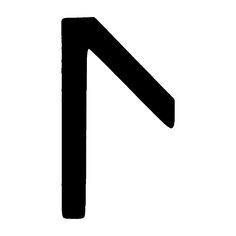Runes

Jennifer Halls
Runes are ancient. They are the symbols from which our alphabet was developed. The first historically documented use of runes in a systematic way (as words) is 50 C.E. It is not known when the first symbols were written, then used to mean the same thing over and over.
Scholars still study and argue how and when these letters changed shape into the type on our modern-day keyboards, yet they are the foundation of every word we write. Learning about the runes can give us a completely different perspective and dimensional richness of the words we choose. They can also give us interesting ways to focus our lives and our writing.
For instance, today I reached into a bag of runes while internally asking, “What is the most important thing to write about for Charlotte Lit?” One wooden disk felt slightly different than the others. It was Laguz, which is connected to things unseen but felt—intuition. This suggested I needed to share my simple intuitive process of pulling a rune to focus my writing. This is a quick and easy way to reveal what perspective might be needed in a piece of writing, especially since I mainly use runes as a way to unlock intuition.

Laguz
The word rune is found in most Germanic and Celtic languages to mean mystery or secret, hinting at their intuitive nature. The way their meanings thread through every word is a secret that even the best scholars have only sketchy ideas about. I find etymology very satisfying; discovering meanings from root words can be quite revealing. But how were those words formed? While we may never know, we can play with the clues runes give us.
Want to learn more? Jennifer leads a one-day class, “Runes: Discover the Hidden Power in Words,” February 29, 2020. More information is here.
